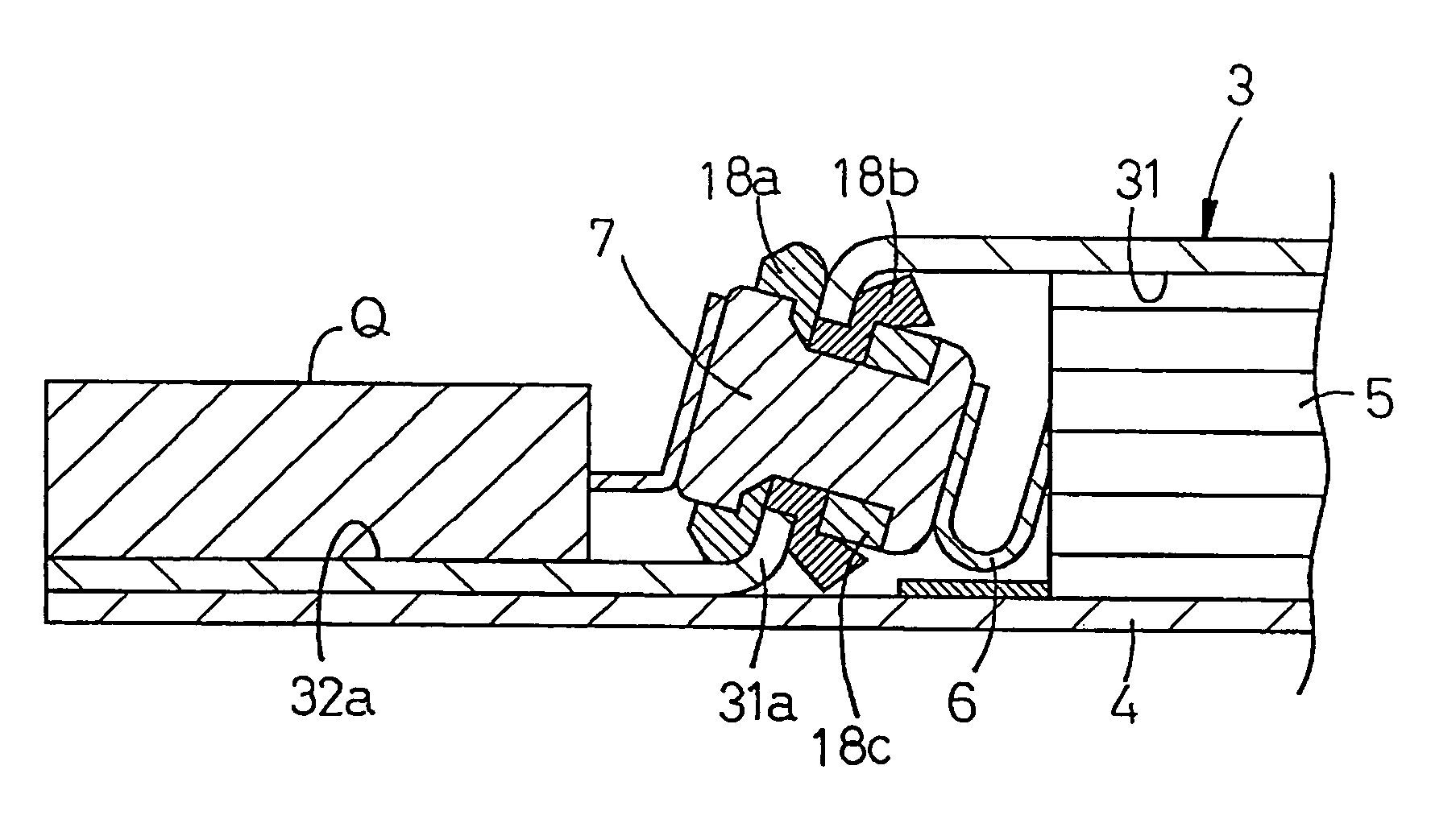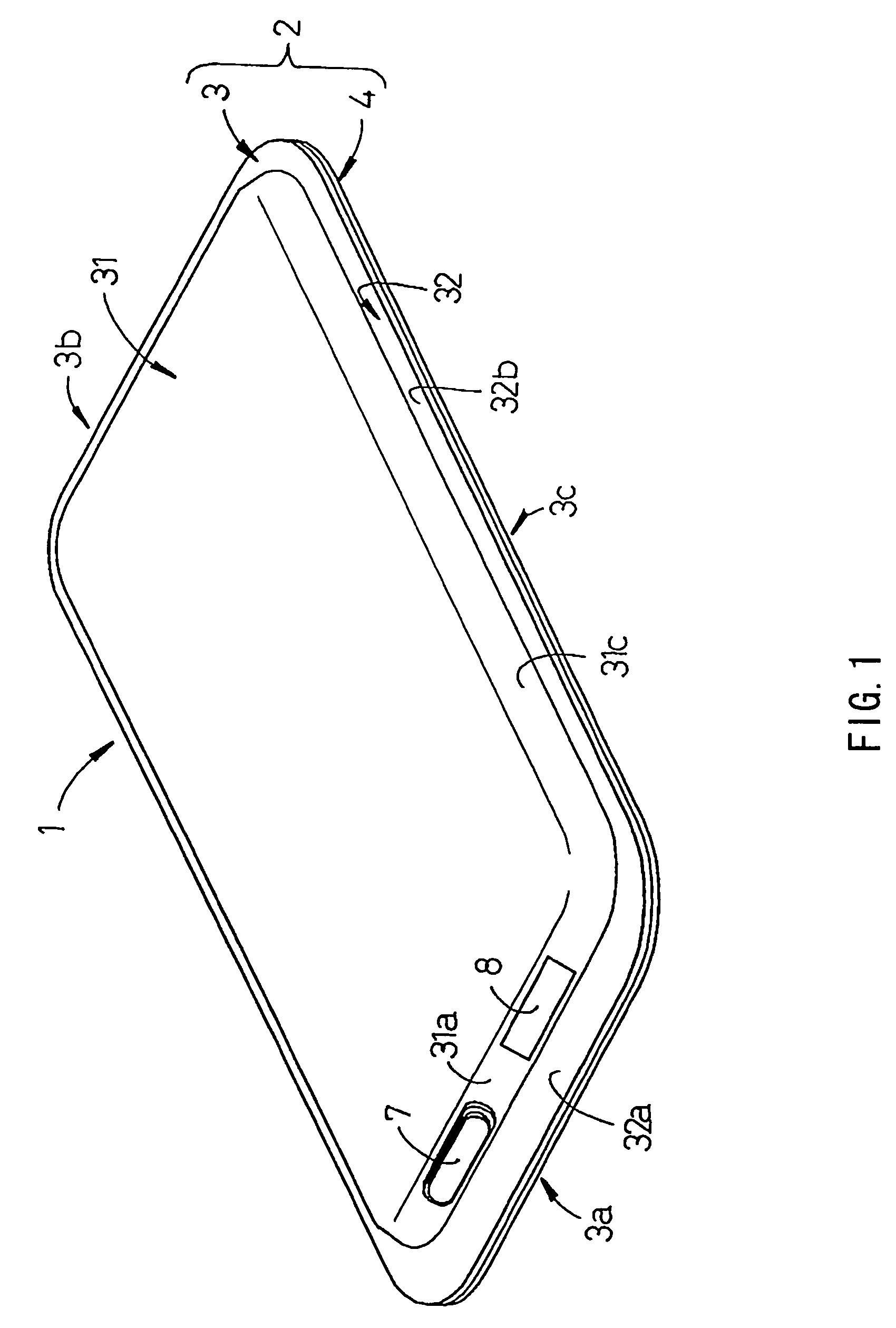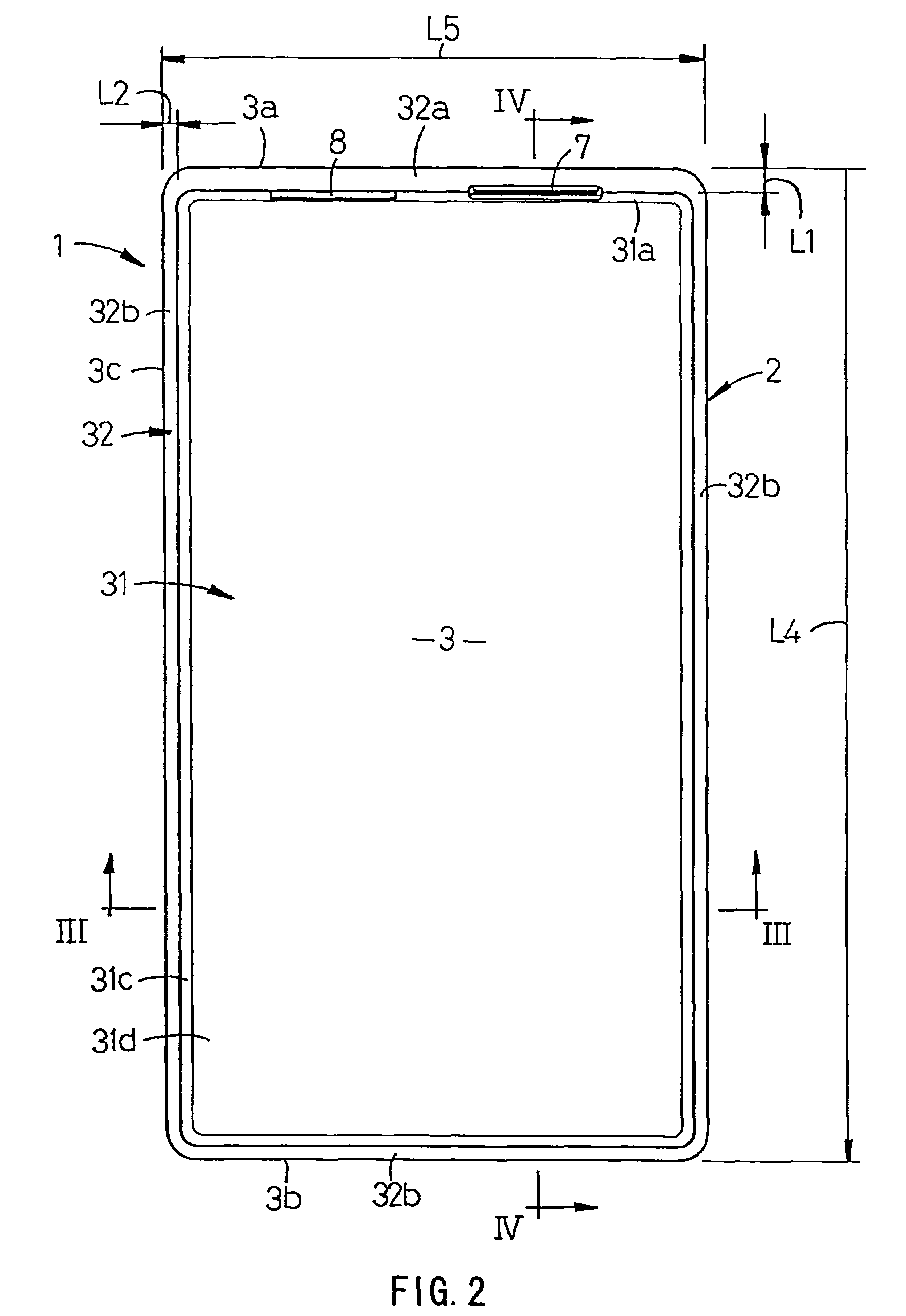Battery comprising a flange formed at a peripheral edge and a protection circuit attached to the flange
- Summary
- Abstract
- Description
- Claims
- Application Information
AI Technical Summary
Benefits of technology
Problems solved by technology
Method used
Image
Examples
Embodiment Construction
[0055]FIGS. 1 to 6 show an example in which one embodiment of the present invention is applied to a prismatic lithium ion secondary battery (hereinafter, referred to as a “battery”). As shown in FIGS. 1 and 2, a battery 1 has a battery can 2 that has a prismatic shape in a plan view (state in FIG. 2) provided with four rounded corners. As shown in FIGS. 1 to 4, the battery can 2 is composed of a can body 3 having a concave portion 31, and a metal cover 4 for sealing an opening end of the concave portion 31 of the can body 3.
[0056]The can body 3 is formed in a plate shape by subjecting one metal plate (sheet plate) to shallow drawing, and a flat flange 32 is formed along an entire periphery of a peripheral edge of the opening end. In the flange 32, a width (flange width) L1 of a flange portion (first flange portion) 32a at a first short side portion 3a positioned on a upper end side of the can body 3 in the state shown in FIG. 2 is larger by 1 mm or more than a width (flange width) L...
PUM
 Login to View More
Login to View More Abstract
Description
Claims
Application Information
 Login to View More
Login to View More - Generate Ideas
- Intellectual Property
- Life Sciences
- Materials
- Tech Scout
- Unparalleled Data Quality
- Higher Quality Content
- 60% Fewer Hallucinations
Browse by: Latest US Patents, China's latest patents, Technical Efficacy Thesaurus, Application Domain, Technology Topic, Popular Technical Reports.
© 2025 PatSnap. All rights reserved.Legal|Privacy policy|Modern Slavery Act Transparency Statement|Sitemap|About US| Contact US: help@patsnap.com



